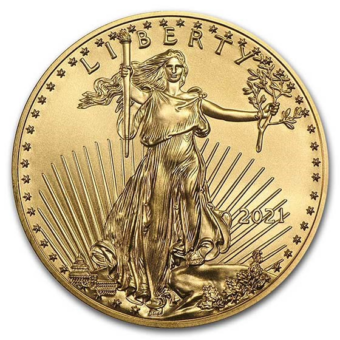EXCERPT: Welcome to this week's "Weekly Silver and Gold Rush" where we chart the currents of precious metals markets, capturing the pulse of gold and silver trends for the discerning enthusiast. From geopolitical tensions stirring safe-haven investments to the Federal Reserve's interest rate strategies, we provide an analytical compass to navigate through the market's ebbs and flows. As we anticipate the upcoming economic indicators, our insights are tailored for those who seek to stay ahead, ensuring our readers are equipped for the week's opportunities and challenges. Don't miss the chance to elevate your market acumen – join us on this engaging journey.
Monday - 10.30.23: Gold and silver prices have strengthened in early U.S. trading Monday, buoyed by safe-haven demands due to the ongoing Israel-Hamas conflict and potential for a broader Middle East war. The week's focus will also be on central bank meetings, including the Federal Reserve, with expectations of a pause in the interest-rate-increase cycle, and the U.S. employment report for October.
Tuesday - 10.31.23: Gold and silver prices remain relatively stable in early U.S. trading Tuesday. The ongoing Israel-Hamas conflict continues to provide support for precious metal prices. China's manufacturing sector contracted in October and its services sector growth slowed, while the Euro zone reported a significant decrease in inflation and a slight contraction in third-quarter GDP.
Wednesday - 11.01.23: Gold and silver are slightly down in early Wednesday trading as markets await the Federal Reserve’s monetary-policy decision. Overnight, U.S. stock indexes pointed to a stronger opening, and China’s Caixin manufacturing PMI for October showed a larger than expected contraction, signaling weakened business confidence. The U.S. dollar index is up, crude oil prices are around $82.00 a barrel, and the 10-year U.S. Treasury yield is at 4.899%.
Thursday - 11.02.23: Gold and silver prices are experiencing a boost in early U.S. trading Thursday. The market has largely assimilated the outcomes of Wednesday's FOMC meeting, where the Federal Reserve maintained U.S. interest rates, aligning with market predictions. Fed Chair Jerome Powell intimated a potential pause in interest rate hikes, though he did not completely dismiss future increases. The week concludes with the U.S. employment situation report for October, where the crucial non-farm payrolls figure is projected to show a gain of 170,000, a decrease from September's 336,000 increase.
Friday- 11.03.23: Gold rises to $1,990.02 and silver to $23.03 as Fed maintains rates; HSBC introduces blockchain for easier trading in the London gold market, signaling a shift towards digitization in the financial industry.
Labor Market Loses Steam: U.S. Job Growth Falls Short, Unemployment Ticks Up
In a notable deceleration from previous months, the U.S. job growth for October fell below expectations, with nonfarm payrolls rising by only 150,000 compared to the forecasted increase of 170,000. This slowdown marks a significant drop from September's robust gain of 297,000 jobs and comes as the manufacturing sector took a hit, primarily due to the United Auto Workers strikes. The unemployment rate inched up to 3.9%, reaching its highest point since January 2022, and the labor force participation rate saw a slight decline. Despite these headwinds, certain sectors like health care and government continued to add jobs. Wage growth remained modest, potentially easing pressure on the Federal Reserve's inflation-fighting measures. The softer job data has led to a reduced likelihood of a rate hike in December and has economists contemplating the possibility of rate cuts in the coming year.
Gold Surges Past $2,000 on Lackluster U.S. Job Growth
As the U.S. economy produced a mere 150,000 jobs in October, falling short of the anticipated 178,000, gold prices have leapt over the $2,000 threshold, revitalized by the underwhelming job market data. The unexpected rise in unemployment to 3.9% coupled with downward revisions of August and September job estimates, and a muted wage growth of 0.2%, have all contributed to the metal's luster. The average hourly earnings over the past year have seen a rise of just 4.1%, further bolstering the case for the Federal Reserve to potentially halt its interest rate hikes. With December gold futures climbing to $2,006.40 an ounce, the softer labor market indicators are fueling conjecture that the Fed might ease its tight monetary stance, despite Chair Powell's previous intimations that rates could still climb.
A Wall Street Monstrosity in the Easy-Money Era
In a blistering critique fit for a Wall Street horror story, Jim Grant, the veteran editor of "Grant's Interest Rate Observer," has sounded the alarm bells, proclaiming the US financial system to be teetering on a precipice, thanks to a reckless era of rock-bottom interest rates that blew up an "everything bubble." Speaking in tones that could chill the blood of any investor, Grant forecasted a looming recession that's not just on the horizon—it's knocking at the door. His outlook is as gloomy as a cloudy day on Wall Street, with a bearish stance on stocks, a dismissive wave at the crypto craze, and an almost nostalgic nod to gold as the lone knight in shining armor amidst the financial chaos. He didn't mince words in a recent Rosenberg Research webcast, where he decried the easy-money decade for birthing a financial Frankenstein—a system of artificial balance sheets set to unleash monstrous economic consequences. Whether his predictions are prophetic or mere cautionary tales, one thing's clear: Grant's reflections are a grim read for holiday cheer in market land.
Gold Retreats from Highs as Service Sector Growth Slows Down
Gold prices withdrew from the psychological milestone of $2,000 per ounce amidst a modest contraction in the U.S. service sector for October. The Institute for Supply Management (ISM) reported that its Services Purchasing Managers Index (PMI) dipped to 51.8, down from 53.6 in September, and below the expected 53, signaling a slower expansion in the services industry. The sector has seen growth for the 10th month in a row, yet the pace has evidently cooled since December 2022's contraction. Employment and Business Activity indices both showed a decrease, while New Orders Index displayed a gain, offering a mixed view of the sector's health. Notably, the Prices Index indicated a marginal decline, which could reflect easing inflation pressures. Spot gold initially surged following a disappointing nonfarm payrolls report but scaled back, suggesting that investor sentiment is torn between economic uncertainty and the dynamics of the labor market, with gold last trading at $1,993.44 an ounce.
Fed's "Irrelevance" Paves Gold's Path to New Heights
Defiantly brushing off the Federal Reserve's hawkish postures, gold's march above the $2,000 threshold appears unstoppable, with the central bank's monetary policy losing its sting in deterring the metal's ascent, suggests Robert Minter of abrdn. According to Minter's interview with Kitco News, the Fed's rate maneuvers have become a sideshow to more compelling forces driving gold toward record peaks. Despite central banks gobbling up a whopping 800 tonnes of gold as of the third quarter, and Treasury Inflation Protected Securities (TIPS) signaling lower gold prices, the precious metal has maintained its luster, undeterred. The mix of relentless central bank buying, simmering geopolitical tensions, and the dubious effectiveness of the Fed's inflation wrangling is crafting a perfect storm for gold's rally. With the U.S. juggling its expansive fiscal demands and the ghost of persistent deficit spending looming large, Minter positions gold as the defiant protagonist in a financial saga that will "inevitably" see it smash through the vaunted $2,000 barrier and carve out new territory.
Central Banks' Gold Spree Tops Charts with 77 Tonnes
In the gold market, central banks have been on an unprecedented buying spree, with September's 77-tonne acquisition signaling a voracious appetite for the precious metal, reveals the World Gold Council trend report. This splurge contributes to the third quarter's hefty 337-tonne tally, marking a robust period that, while not surpassing last year's zenith, stands as a testament to the strategic shift towards gold in emerging market economies. The People’s Bank of China topped the buying list, bolstering its reserves substantially, accompanied by notable additions from Poland, Uzbekistan, Turkey, and India. While developed markets remain more conservative, Singapore's monetary authority bucks the trend, and the ECB's recent uptake aligns more with administrative changes than a strategic pivot. Overall, the trend for 2023 displays an unshakable central bank confidence in gold, pushing the year's net purchases to soar 14% beyond the previous year and to the highest for the nine-month duration on record, underscoring a broadening base of nations turning to the age-old store of value in a climate rife with economic uncertainties.
Druckenmiller Castigates Yellen's Debt Strategy as Trillion-Dollar Misstep
Renowned investor Stanley Druckenmiller has leveled a severe critique at Treasury Secretary Janet Yellen, branding her inability to secure long-term government debt at historically low interest rates as a monumental fiscal folly. This oversight, according to Druckenmiller, is poised to become a trillion-dollar burden for the American economy, as rising interest rates will magnify the cost of servicing short-term debt. Druckenmiller’s assessment frames this error as the "biggest blunder in the history of the Treasury," a costly misjudgment that will tighten its grip on taxpayers for generations. This criticism highlights a grave concern over the proficiency of financial leadership and serves as an urgent call to action for reform within the nation's economic stewardship.
Next Week’s Key Events
Monday, November 6:
- At 2:00 pm, the Federal Reserve will release its Senior Loan Survey for the month of October.
Tuesday, November 7:
- At 3:00 pm, data on Consumer Credit for the month of September will be made available.
Wednesday, November 8:
- No major economic reports scheduled today.
Thursday, November 9:
- Initial Jobless Claims for the week ending on November 4 will be released at 8:30 am.
Friday, November 10:
The markets will observe the Veterans Day holiday, and no major economic reports are scheduled.
HOW THESE REPORTS MIGHT IMPACT THE GOLD AND SILVER MARKETS:
Federal Reserve Senior Loan Survey (Nov. 6): This survey can provide insights into banking conditions, and any signs of tightening credit conditions could lead to a flight to safety, potentially boosting gold and silver prices.
Consumer Credit (Nov. 7): An increase in consumer credit could be seen as a sign of consumer confidence, potentially leading to a stronger economy and a weaker demand for safe-haven assets like gold and silver. On the other hand, a decrease could signal economic uncertainty, possibly boosting precious metal prices.
Initial Jobless Claims (Nov. 9): A higher number of jobless claims could signal weakness in the labor market, possibly supporting gold and silver as safe-haven assets. A lower number could indicate strength in the labor market, potentially weighing on precious metal prices.
In summary, it’s going to be a very light week in reporting, but a busy schedule in terms of earnings in the equities market. Wall Street will likely pay close attention to all of these releases to gauge the health of the economy and adjust their positions accordingly.






















